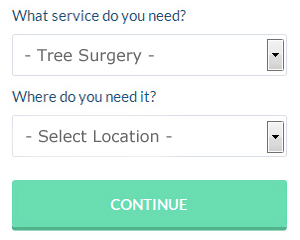Livingston Tree Surgeons (EH53) Scotland: Trees around your property and in your garden in Livingston, add structure, substance and style to what can frequently be a two dimensional area. However, when trees have been poorly maintained or are affected by extreme weather conditions like flooding or gales, problems may occur. If you need to have work undertaken on your trees, it's the best option to consult an established tree surgeon in Livingston, for their expert advice before any work begins.
People in Livingston who try to do tree work by themselves, or by using a non-qualified operative could risk causing damage to the trees, to property or to life. However, tree work isn't a safe occupation, even for expert tree surgeons, who know about all the hazards. Within the profession there are a thought provoking average of 140 severe injuries and 3 deaths annually, making it among the most hazardous jobs in the UK.
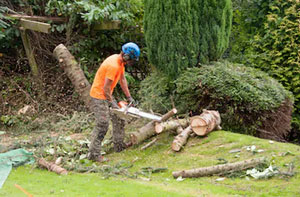
A poorly maintained or damaged tree can also present a danger to life, with around 5 people per year being fatally wounded by falling branches and trees in the UK. If there is an injury, or damage to property due to you employing somebody to perform tree work, you might be liable to third-party compensation claims. The above are just some of the reasons why hiring a skilled Livingston tree surgeon to undertake the work on your trees is imperative. (The source of the above figures was HSE).
There are 2 professional trade bodies that a qualified tree surgeon in Livingston should really be a registered member of. The professional status and membership of any tree surgeon in Livingston can be checked on the websites of both the Arboricultural Association (AA) and the International Society of Arboriculture (ISA). On this webpage you can check for membership of either of these 2 associations, which gives the tree surgeon in question, recognised ARB Approved Contractor status.
For mediation assistance and for advice and help at any point during or after the work has been finished, you can communicate with either one of these trade organisations.
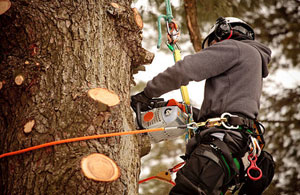
You should graciously decline the offer of an estimate from anyone who you can't find on this directory, and continue your search for an approved and fully qualified tree surgeon. It is best to get a minimum of three different price quotes from various companies in the Livingston area, as soon as you've thoroughly checked their qualifications and professional associations. Whilst getting these quotes you should ask the questions below, stating you need them to provide the answers because of the risks involved with the work:
- Can you provide a NPTC certificate for chainsaw use and maintenance, and documentary evidence of your qualifications and professional memberships? The NPTC/LANTRA certificate is required by law for any tree worker who uses a chainsaw. A seasoned tree surgeon in Livingston could hold Certificates and National Diplomas in Arboriculture.
- Precisely what level of insurance coverage have you got? Your tree surgeon ought to be able to produce an insurance certificate covering a minimum of £5 Million public liability, as outlined by the AA and ISA.
- Would I be able to to contact somebody you've recently done work for, so that I can inspect your work? Independently checking any recent work is always advisable.
- Can you offer me a written quotation? Verbal quotes alone aren't satisfactory. Always try to get a written quote.
The written quote that you are given must include clear and precise details of the planned tree work. Who is responsible for the removal and disposal of debris, tree branches and stumps should be stated, as should specifics of any trees which might be protected in law, and the steps required to obtain permission to work on them. Unless you're a commercial entity, you should also ensure that VAT has been included on the quote. It is vitally important that only capable people are employed to work on your property and trees, and this is wholly down to you. This is stated by the "Common law duty of care responsibilities under the Occupier's Liability Acts of 1957 and 1984."
PRIOR TO WORK COMMENCING - Checking into the possibility of any trees being protected, your selected Livingston tree surgeon should ensure that any tree work can get the green light from the relevant local authority. Finding a tree has protected status does not mean that work can't be carried out, since even protected trees require maintenance in order to cut back old or dead wood and ensure the safety of the public.
If your property in Livingston is located in a designated conservation area, the Local Planning Authority will need no less than six weeks written notice of any tree work you are intending to do. However, tree stems of under 7.5cm in diameter when measured at 1.5 metres from the ground are free from this requirement. If the branches of a protected tree need thinning or pruning to sustain and encourage growth, it's also not necessary to give notice.
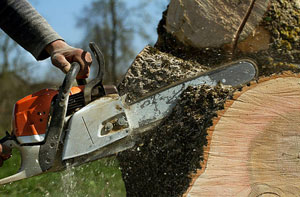
After conducting a full assessment of your trees health, your chosen Livingston tree surgeon will determine the necessary remedial treatment and how the required outcome can be achieved with safety in mind. This will involve completing a risk assessment to include your property, public areas and any section of a neighbour's property that could be affected by falling branches. At this stage, the level of protection needed and the amount of workforce required will also be established. To keep the public and other property safe from harm or damage, this will include both personal protective equipment (PPE) and other safety measures.
ON THE DAY OF WORK - Barriers and safety measures will be put in place before any tree felling, cutting of branches or climbing begins, to keep unauthorised persons away from the area where work is going on. If there is any danger of debris falling into a public road, passing traffic might need to be halted temporarily.
Different types of tree work will demand that the tree surgeon has varying levels of protection. When doing chainsaw work, they will at the very least be wearing specialist protective clothing to prevent serious cutting injuries to the torso, legs and hands. All operatives involved in the work must wear eye and head protection, and high-vis clothing, at all times.
Additional operatives will normally be necessary to help in the removal of high branches and sections of tree trunk, especially if any working at height is involved, and where safety climbing equipment and ladders are being deployed. It is a good idea to inform your next door neighbours of the need for easy access, as a truck or skip for removing the waste will be parked as close as possible to the work area.
AFTER COMPLETION OF WORK - Once the work has been concluded all the waste will be taken away and the whole area cleared of all debris. Your tree surgeon will then prepare and sign off a certificate of work, a copy of which will be given to you. This is particularly important where trees with TPOs are concerned. Footpaths and highways can then be re-opened to the public, and any safety measures places in public spaces taken away.
If you have any issues or problems with the finished work, you should first address them with your tree surgeon so that they can be rectified immediately. If there is any further dispute, and your tree surgeon is an approved member of a professional trade association, you can get guidance and advice from the Arboricultural Association or the International Society of Arboriculture so as to come to a satisfactory solution.
Locally based Livingston tree surgery services will probably have the postcode EH53 and the dialling code 01506. They'll work in Livingston itself, as well as nearby areas such as Winchburgh, Kirknewton, Dechmont, Bathgate, Polbeth, East Calder, Newbridge, Deans, Broxburn, Bridgend, Uphall, Livingston Village, Kirkton Campus, East Whitburn, Seafield, Pumpherston, and these postcodes: EH54 5DT, EH54 0EF, EH54 0SH, EH54 0SY, EH54 0ED, EH54 5JF, EH54 0JS, EH54 0SN, EH54 5JD, EH54 0JE. Checking this out should guarantee you're accessing a local tree surgeon. Livingston householders can benefit from these and numerous other similar services.
For this kind of assistance it is certainly wise to employ a competent local tree surgeon. Livingston homeowners can benefit from the knowledge and expertise that a trained professional can offer.
Dutch Elm Disease
Although Dutch Elm Disease (Ophiostoma novo-ulmi) isn't quite the problem that it once was, over the past fifty years or so it has killed off many millions of elm trees throughout the UK. Accidentally brought into the United Kingdom, in infected elm logs imported from Canada in the late 1960's, DED (Dutch Elm Disease) is caused by the fungus Ophiostoma novo-ulmi which is spread by the elm bark beetle (Scolytus).
Its fast spread was attributed mainly to elm products such as saplings, bark mulch, crates, and firewood logs with the bark on, being transported throughout the UK. This horrific disease did not just impact elms in the UK, but also destroyed tree stocks in continental Europe and North America. Although the origins of DED are as yet unproven, the suspicions are that it first originated in Asia (possibly Japan).
The first symptoms of Dutch Elm Disease are:
- Clusters of leaves turning yellow and wilting.
- Twigs with rings or spots in cross-section.
- Twigs turning into a "shepherd's crook".
- New shoots dying back from the tips.
It usually begins to show up in early summer.
As there are now hardly any sizeable elms in the British countryside, the elm bark beetle's habitat has been largely eradicated, the result of which has been a slowing of the disease. The propagation of young saplings that are so far resistant to DED is a continuing project.
You can ask for a diagnosis from the THDAS (Tree Health Diagnostic and Advisory Service), or you can get hold of your local tree surgeon for advice and guidance, if you happen to have elm trees in your garden in Livingston, and have suspicions that they might be afflicted with DED.
(Tags: Dutch Elm Disease Signs, Spotting Dutch Elm Disease, Dutch Elm Disease Livingston).Tree Surveys Livingston
There are a number of reasons why you could require a tree survey, and the most common is for property extension or land development. If, for example, you are clearing a piece of land in Livingston to prepare for the building of an extension to an existing property or a brand new house, and trees are growing on that land, you might need to perform a professional tree survey to British Standards BS5837 (2012). Livingston tree surveys on both private and public property, must be completed by an accredited tree surveyor or tree surgeon.
Within the specified area, a correctly done tree survey will glean a whole bunch of information about the trees. For example:
- The health of the trees.
- The species of trees on the site (either scientific or common).
- The predicted life expectancy of the trees.
- A tree reference number for each of the trees.
- The age of the trees.
- The existence of any TPOs (Tree Preservation Orders).
- The number of trees.
- The diameter of each tree (measured 1.5m above the ground).
- The height of each tree.
- The spread of the branches to East, North, West and South.
- Recommendations for tree management.
If you happen to be carrying out work on an existing property or home in Livingston, but aren't modifying the access points or service lines, or increasing the footprint of the property, you will most likely not need to carry out a tree survey. (Tags: Tree Surveyors Livingston, Livingston Tree Surveys, Tree Surveys Livingston, Tree Survey Livingston).
The ISA - International Society of Arboriculture
An international, non-profit organisation that is based in Atlanta, GA, United States, the International Society of Arboriculture is generally referred to as the ISA. Providing credentials for tree care specialists all around the world, the ISA is a membership association that nurtures the professional practice of arboriculture.
Supporting best tree care practices via educational services, publications and events, the ISA has a firm focus on allowing those involved in the tree care sector fully develop their skills, knowledge and arboricultural expertise wherever possible.
The Arboricultural Association (AA) became an associate organisation of the International Society of Arboriculture after signing an agreement with them in mid-2016. This substantially strengthened the relationship between the two bodies and offered further opportunities for ISA members in Great Britain and Ireland. Arboricultural Association members in the United Kingdom and Ireland now benefit from being part of a global network of tree care professionals. Boasting over 22000 members globally the International Society of Arboriculture now has associate organisations and professional affiliates in EXTRAhedge lowering, shielding trees from grazing animals, tree pruning in Livingston, crown lifting, fruit tree pruning, hedge planting Livingston, crown thinning Livingston, hedge cutting, site clearance, tree felling Livingston, tree waste removal, tree replanting, tree topping, pest control, drop crotching, eco plug treatments, root grinding in Livingston, crown cleaning, tree surveys Livingston, woodland management, tree cutting, dead-wooding, root removal, woodchipping, landscaping in Livingston, cable bracing, emergency tree removal, crown raising in Livingston, root pruning Livingston, tree fertilising, air spading Livingston, root flare exposure Livingston, coppicing, dead wooding, tree workTEN, and the UK.
Tree Preservation Orders & Conservation Areas Livingston
Another thing to consider before commencing major work on your trees, is whether they have a Tree Preservation Order (TPO) on them. You must contact your local authority to find out if any of the trees within the boundary of your property are protected by Tree Preservation Orders. A Tree Preservation Order forbids the wilful damage, topping, wilful destruction, felling, uprooting, lopping or removal of any tree which is covered. You can ask your tree surgeon to help with this process, any dependable one will be happy to offer advice and guidance.
If you live in a conservation area in Livingston, and propose to carry out any work on a tree with a diameter of 75 millimetres or more (1.5m from the ground), you need to give at least six weeks notice in writing to your local authority. (Tags: Tree Preservation Orders Livingston, Tree Preservation Orders (TPOs) Livingston, Tree Preservation Order Livingston).
Wood Chipping Livingston

To reduce the vegetation, tree limbs and branches that tree surgery generates, most professional Livingston tree surgeons will utilise wood chipping machinery. Although of course it depends on the equipment that is being used, these powerful wood chipping systems can munch up as much as 40 tonnes of material per hour, and even the smaller, more commonly used models can process around 5 tons each hour, or basically as much as you can feed into them.
Chipped down timber is naturally much easier to transport, taking up less space in the tree surgeon's wagon, and can in addition be used for weed prevention, wood pulp, garden pathways, biomass solid fuel, ecosystem restoration, mushroom cultivation, mulch in gardening and landscaping, to name but a few.
If you've got a use for the wood chips that are produced during your tree surgery work, tree surgeons in Livingston will generally be very happy to let you have however much you need, and they'll take away the rest for use on other projects, or dispose of as they see fit. Tree surgeons are a good source for wood chippings that you can use for various purposes in your garden, even if you don't actually need any tree surgery work doing on your property in Livingston. Some tree surgeons will charge you for wood chippings, especially if you need them to be delivered, others will let you have them for nothing.
Well known brands of wood chipping equipment include T-Mech, Crytec, Timberwolf and Forest Master.
Health and Safety Considerations

One of the primary challenges with doing tree surgery in Livingston is the safety aspect, because it can definitely be a dangerous process if done incorrectly. There are many factors that can lead to injury or disaster if the individuals doing the tree surgery are inexperienced or untrained. The most commonplace issues are not using hearing or eye protection, inadequate head protection, falling branches and timber, no protection from falling, in the form of ropes, harnesses and platforms, not cordoning off the area to protect vehicles and the public and failure to wear cut resistant clothing (particularly trousers and safety boots). What might be susceptible owing to these incompetencies are the property owners, the tree surgeon himself (person in the tree), facilities on the street, fencing and garden sheds, passers by, passing and parked vehicles, the actual tree itself, team members working at ground level, nearby properties.
Storm Damage Livingston
When looking at a sturdy, strong tree standing tall and proud in your garden it's difficult to picture it ever falling to the ground. Some species of tree can in actual fact survive for hundreds (even thousands) of years and will do so happily in most conditions.
Extreme climatic conditions can however cause substantial damage to trees, and in addition to the ever present danger of falling branches or tree limbs, entire trees can fall down in certain situations. High winds are the main enemy of trees, and this form of damage has become more and more commonplace in Livingston, as the number of severe storms and weather events increases with climate change. Other issues can be heavy winter snowfall, and waterlogged soil during floods or prolonged periods of rain.
So as to be ready for any issues that could occur during severe weather conditions, it's advisable to have an experienced Livingston tree surgeon prune and remove any dead, dying or excessively long branches, and check for any other issues.
Lightning rods, copper conductors, or other lightning protection systems are also recommended for taller trees, to stop them being struck by lightning and to safeguard nearby buildings and property which might be susceptible to side-flashes ("jumps") that result in more damage, along with harm done to the tree itself. A lightning strike could easily kill a tree completely, or severely weaken it, making it more vulnerable to pest attacks or disease. You may not imagine that lightning strikes are that common, yet in the UK alone there are approximately 300 thousand strikes recorded every year.
Your local Livingston tree surgery company will be able to advise you on what can be done to protect your trees from being damaged by storms, and lessen the risk of accidents happening as a result of this. (Tags: Storm Damaged Trees Livingston, Storm Damage Prevention Livingston, Storm Damage Livingston).
Tree Pollarding Livingston
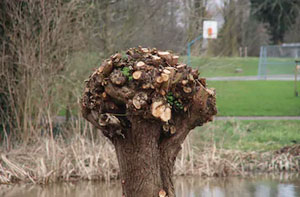
The technique whereby a tree's size is greatly decreased because it's grown too big for its current setting, is know as pollarding. This technique is from time to time used for aesthetic reasons to change a tree into an especially attractive shape. You will quite often see trees which have been pollarded alongside streets in Livingston, and also pretty typically in managed hedgerows For people who love trees it is not a very popular practice, seeing that the consequence is inclined to be somewhat bare and stark, with the appearance of being practically dead. Tree species like horse chestnuts, maples, limes, sycamores, oaks, beeches and planes are typical contenders for pollarding, and the beneficial side of this process is that trees that may otherwise need to be cut down can be conserved for the enjoyment of everybody. (Tags: Tree Pruning Livingston, Pollarding Livingston, Tree Pollarding Livingston)
Removing Tree Stumps Livingston
When you've had a tree removed from your garden in Livingston, unless previously arranged with the tree surgery company, you will be left with a tree stump to contend with. In some situations it might be plausible for you to just leave the stump in place until it decays by itself. However, stumps in your garden can produce suckers in an effort to regrow, and substantial tree stumps can take many years to break down, during which time they can become a trip hazard, and eyesore and the perfect home for undesirable fungi, bacteria and pests.
Stump grinding and stump removal are the two primary options, if you do elect to do away with the tree stump totally. Below we'll be focusing on the removal solution.
There are basically 3 methods of removing a tree stump - chemical treatments, digging out by hand and burning. If you want to have a go at tree stump removal yourself, you could go with any one of these procedures where appropriate. Tree surgeons themselves will normally go with the aforementioned stump grinding option, although might suggest a chemical stump removal treatment such as eco-plugging.
Stump Burning: Burning a stump is not generally a recommended course of action, and may contravene legislation in your area, so take care if using this method. You'll need to drill some one inch holes in the tree stump, and pour in vegetable oil, you will have to keep the holes topped up for a few days until the stump has been completely saturated. Charcoal or logs should then be stacked around the tree stump and lit. However, this must be checked constantly and not left unattended. Once the burning is complete, you must make certain that the fire is fully extinguished, and when it has completely cooled down you can dig out and remove the charred remains of stump and roots.
Other methods include digging out and clearing all the soil from underneath the tree stump, and setting a fire in the cavity that has been created. None of these burning techniques should ever be used if the tree stump is close to fences, buildings or other trees.
Hand Stump Digging: The strategy for digging out by hand is rather self-explanatory, and calls for digging out as much of the soil as you can from around the roots, sawing through any major roots with a handsaw or chainsaw, and finally freeing the stump so it can be lifted out. A winch may be needed in order to complete this process. This has a tendency to be tiring and laborious work, and shouldn't be tackled unless you are fit and healthy.
Chemical Stump Removers: If you decide on the chemical removal solution, this will involve the use of Resolva Xtra Tough Tree Stump Killer, Vitax SBK Stump Killer or Roundup Tree Stump Remover. You should always study and closely follow the manufacturer's instructions for timings, applications and rates for these chemicals, and be mindful of the fact that they're toxic and often flammable. This is not a short term fix, and it can take several weeks for the stump to rot completely, after which a spade and axe can be used to chop it up and remove it.
(Tags: Tree Stump Removal Livingston, Removing Tree Stumps Livingston, Chemical Stump Killers Livingston, Removal of Tree Stumps Livingston).Stump Grinding
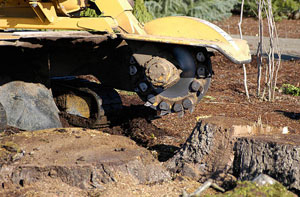
It is important to ensure that you employ a company with the correct knowhow and equipment, when you need to have stump grinding carried out in Livingston. Any decent tree surgeon in Livingston will fully understand the need for eliminating all remnants of the tree stump to at least a 12 inch depth, so it doesn't come back. Having the proper machinery means they can grind out roots and stumps fairly close to walls and structures without causing any damage. Even any tree stumps that are found in alleys and passageways, can be removed using the right equipment. Where really large trees must be taken out the stump that remains can be pretty substantial and the thicker roots will go down to a significant depth, requiring a herculean effort to deal with them them.
Crown Thinning Livingston
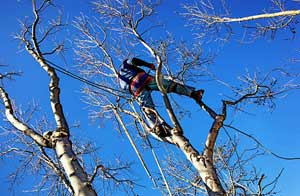
Taking away small living branches on the outer areas of the tree's crown, but not adjusting the size or shape of that tree, is termed crown thinning. This is intended to result in a uniform density of foliage, which achieves specified aims such as: to lower the total weight of the crown, to allow more light to pass through, to cut down the stress on larger limbs because of snow, gravity, wind, or ice, to minimize the tree's wind resistance or to stop the tree being uprooted in windy weather conditions. A uniform thickness of foliage encircling uniformly distributed branches should be the tree surgeon's goal when crown thinning, it should not transform the overall size and form of the tree.
Chainsaws in Tree Surgery
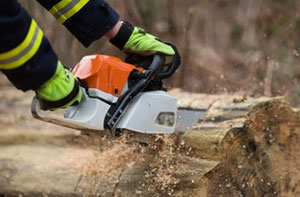
Perhaps the most commonplace piece of equipment used by professional tree surgeons in Livingston, the chainsaw is also the most dangerous. Despite the fact that mains and battery models of chainsaw can be purchased, the most popular with tree care professionals are driven by petrol, thanks to their ease of use and portability. Petrol driven chainsaws are really the only option for heavy tree work, being very powerful, robust and able to cut effortlessly through branches and tree limbs of any size.
Comprising a rotating chain containing a set of sharp teeth that cut through the branches and wood, a chainsaw is essentially a fairly simple piece of equipment. Chainsaws are also available in a variety of types, each having its own particular use - top-handled for working at height (and which can be used with one hand), rear-handled for working on the ground (must always be used with two hands) and pole saws for long distance pruning and hard to reach branches.
You'll seldom find an experienced Livingston tree surgeon who does not use a chainsaw, despite the fact that climbing high up a tree with a spinning blade in your hand is not an especially safe thing to do. Being fully trained in the safe use of chainsaws is a primary prerequisite for any tree surgeon, and is essential before they can be approved by the Arboricultural Association (AA) or the ISA.
For anybody looking to purchase a chainsaw in Livingston, there are several makes and models available, but the most popular with professionals are Makita, Hyundai, Husqvarna and Stihl.
Coming Soon: Tree pruning Livingston.
Tree Surgery Tasks Livingston

Livingston tree surgeons can usually help you with hedge lowering, shielding trees from grazing animals, tree pruning in Livingston, crown lifting, fruit tree pruning, hedge planting Livingston, crown thinning Livingston, hedge cutting, site clearance, tree felling Livingston, tree waste removal, tree replanting, tree topping, pest control, drop crotching, eco plug treatments, root grinding in Livingston, crown cleaning, tree surveys Livingston, woodland management, tree cutting, dead-wooding, root removal, woodchipping, landscaping in Livingston, cable bracing, emergency tree removal, crown raising in Livingston, root pruning Livingston, tree fertilising, air spading Livingston, root flare exposure Livingston, coppicing, dead wooding, tree work and other tree surgeon services in Livingston, Scotland. These are just a handful of the activities that are performed by a local tree surgeon. Livingston companies will be delighted to keep you abreast of their whole range of services.
Tree Surgery Apprenticeships - Training - Courses Livingston

Having a career in tree surgery is a rewarding and satisfying way to earn a living. Upon investigation, you'll learn that there are a variety of avenues into a career in tree surgery including opportunities such as registering for a private course, commencing at the bottom (as a groundworker) and working towards this goal, enrolling for a college course, taking a university course or gaining a tree surgery apprenticeship. For young people, applications for tree surgery apprenticeships in Livingston (when available) can be sent in while they're still attending school. Individuals of all age groups can sign up for college courses and private courses in tree surgery and they are available all over Great Britain. Students with the right qualifications (ordinarily one to three "A" levels) can aim for degrees, foundation degrees and higher national diplomas at university, in one of the various related fields such as woodland ecology & conservation, countryside management, forest management, forestry and arboriculture. If none of the above options are your cup of tea, it may be possible to develop a bit of tree management experience by carrying out voluntary work for organisations and groups like the Forestry Commission, the Woodland Trust, the National Trust or the Tree Council. If you arrived here searching for tips on "how to become a tree surgeon in Livingston", with a bit of luck this brief article has proved useful. You can view even more tips on how best to become a tree surgeon on the National Careers website. (Tags: Tree Surgery Courses Livingston, Tree Surgery Training Livingston, Tree Surgery Apprenticeships Livingston)
Getting Advice and Guidance
When talking to local Livingston tree surgeons and arborists, you need to ask them questions like: Can you provide me with references from former customers? Do you have membership of a trusted professional association (such as The International Society of Arboriculture or the Arboricultural Association)? Do you and your staff have the correct qualifications and certifications (for tree care and the use of chainsaws)? Will you provide me with a written estimate? Have you got public liability and employment insurance? Do your working practices match the British Standard? to verify that they know precisely what they are up to and that they'll not inflict irreparable damage on your prized trees. You need to look elsewhere for a tree surgeon if you don't get acceptable replies to any of these important questions.

You need to visit the AA (Arboricultural Association) site to find an abundance of helpful advice about ways to pick a first-rate tree surgeon, in conjunction with a searchable directory of approved tree surgeons in the UK. An additional fine source of information is the International Society of Arboriculture site which has a "verify tree surgeon credentials" tool (here) and a "find an arborist" tool. To get a basic idea of arboriculture as an occupation, you can have a look at the trusty old Wikipedia "Arborist" webpage by going here, or the Britannica article here. You could try one of the well known trade portals such as Local Heroes or Rated People, where necessary credentials have previously been confirmed and testimonials are available to look at, to save some time and energy. A Government supported organisation where you can also uncover reputable tradesmen such as tree surgeons, comes in the form of Trustmark.
Tree Surgeons Near Livingston: Also find: Deans tree surgeons, Pumpherston tree surgeons, Bridgend tree surgeons, Seafield tree surgeons, Newbridge tree surgeons, Bathgate tree surgeons, Winchburgh tree surgeons, Kirkton Campus tree surgeons, East Whitburn tree surgeons, Livingston Village tree surgeons, Polbeth tree surgeons, Broxburn tree surgeons, East Calder tree surgeons, Uphall tree surgeons, Dechmont tree surgeons, Kirknewton here. All these villages and towns are covered by a local tree surgeon. Livingston home and business owners can get quotes by going here.
Scotland Tree Surgeons
In the Scotland area you can likewise get: Hurlford tree surgeons, Milnathort tree surgery, Allanton tree surgeon, Hardgate tree care services, Ceres tree surgeon, Armadale tree management, Inverbervie tree surgeon, Cairneyhill tree surgery, Dunlop tree surgeons, Dingwall tree surgeons, Invergordon tree surgeons, Dalgety Bay tree surgery, Anstruther tree care, Muirkirk tree care, Kelty tree surgery, Lossiemouth tree care services, Methil tree surgeon, Luncarty tree care, Whithorn tree surgeons, Auchterarder tree care services, Tarbolton tree surgeon, Larkhall tree management, Scone tree care services, Chryston tree surgeon, Shieldhill tree care services, Bellshill tree surgeons, Cockenzie tree surgeon, Comrie tree surgery, Glenboig tree care. In every part of Scotland you will be able to track down tree surgeons who'll provide you with high quality services for all your tree care needs. If you cannot find the right tree surgeon in Livingston itself then you should not have any problems locating a decent one someplace nearby.
Tree Care Services Livingston
- Livingston Tree Pollarding
- Livingston Crown Removal
- Livingston Shrub Maintenance
- Livingston Woodland Clearance
- Livingston Root Removal
- Livingston Woodland Management
- Livingston Tree Shaping
- Livingston Forestry Management
- Livingston Dead Wooding
- Livingston Tree Watering
- Livingston Crown Lifting
- Livingston Soil Terravention
- Livingston Tree Planning
- Livingston Tree Maintenance
More Livingston Trades: Of course, whenever you happen to be having tree surgery carried out in Livingston, Scotland, you'll likely be in need of other garden related services, and along with a tree surgeon in Livingston, Scotland, you could additionally need garden clearance in Livingston, garden wall construction in Livingston, driveway specialists in Livingston, garden planning and design in Livingston, patio installation in Livingston, rubbish removal in Livingston, hard landscaping in Livingston, lawn mowing in Livingston, gate fitters in Livingston, pond maintenance in Livingston, topiary in Livingston, SKIP HIRE in Livingston, artificial grass installers in Livingston, weeding in Livingston, decking installers in Livingston, garden shed builders in Livingston, and other different Livingston tradespeople.
Tree Surgeons Around Livingston: This year, property owners in the following Livingston locations have sent in enquiries about tree surgery: Carmondean Centre, Murieston Way, Onslow Street, Erskine Way, Howden House Steadings, Longpark Place, Mossgiel Cottages, Shiel Walk, Ramsay Court, Balgreen House, Skivo Farm, Sycamore Glade, Houstoun Interchange Business Park, Balgreen Farm, The Parkway Retail Square, Granby Avenue, Fairfield, Eliburn Industrial Park, Newyearfield, Morlich Walk, Almondvale Road, Katherine Street, Lyle Green, Drumgelloch Crescent, Carron Walk, Sinclair Way, Gowanbank, Woodlands Park, Murray Way, along with these postcodes EH54 5DT, EH54 0EF, EH54 0SH, EH54 0SY, EH54 0ED, EH54 5JF, EH54 0JS, EH54 0SN, EH54 5JD, EH54 0JE. Work was accomplished in these locations by a certified tree surgeon. Livingston householders received dependable and top notch tree surgery services on every occasion.
 Tree Surgeon Livingston
Tree Surgeon Livingston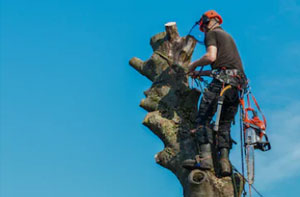 Tree Care Livingston
Tree Care Livingston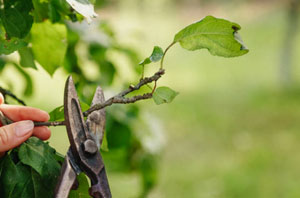 Tree Surgery Livingston
Tree Surgery LivingstonMore Scotland Tree Surgeons: Scotland tree surgeons: Girvan, Newport-on-Tay, Ardrossan, Rutherglen, Armadale, Blantyre, Lerwick, Tranent, Denny, Hawick, Lanark, Bonnyrigg, Stirling, Hamilton, Wishaw, Renfrew, Perth, Bishopbriggs, Glenrothes, Penicuik, Bonnybridge, Dingwall, Rosyth, Edinburgh, Dunfermline, Stevenston, Linwood, Inverkeithing, Kinross, Grangemouth, Kirkintilloch, St Andrews, Ellon, Glasgow, Cowdenbeath, Ballingry, Tullibody, Stranraer, Methil, Kilmarnock, Forres, Carluke, Kirriemuir, Bathgate, Paisley, Ayr, Falkirk, Dunbar, Alva, Linlithgow, Aberdeen, Newton Mearns, Uddingston, Dumbarton, Dalkeith, Inverurie, Burntisland, Cambuslang, Stewarton, Dundee, Greenock, Clydebank, Whitburn, Nairn, Tayport, Irvine, Ardeer, Peterhead, Buckhaven, Broxburn, Jedburgh, Coatbridge, Inverness, Cupar, Westhill, Cumnock, Viewpark, Dumfries, Dunblane, Fraserburgh, Kilsyth, Galston, Alloa, Kelso, Bearsden, Motherwell, Stepps, Stenhousemuir, Arbroath, Elgin, Leven, Barrhead, Prestwick, Brechin, Lenzie, Forfar, Milngavie, Bellshill, Airdrie, Strathaven, Kilwinning, Dalgety Bay, Fort William, Cumbernauld, Carnoustie, Bishopton, Erskine, Dalry, Lochgelly, Kirkcaldy, Prestonpans, Galashiels, Larbert, Larkhall, Peebles, Musselburgh, Livingston, Montrose, Stornoway, Troon, East Kilbride, Johnstone, Largs and Stonehaven.
If you want local Livingston information click here
Tree Surgery EH53 area, phone code 01506.
More Trades: Gate Fitters - Gutter Cleaning - Tilers - Carpet Fitters - Carpenters
Arboriculture Livingston - Tree Care Livingston - Vegetation Control Livingston - Root Removal Livingston - Crown Reduction Livingston - Tree Management Livingston - Tree Surgeon Near Me - Tree Surgeons Livingston - Stump Removal Livingston





